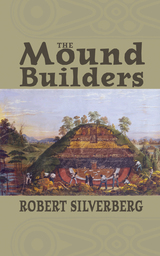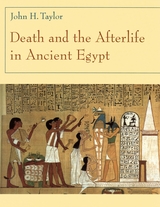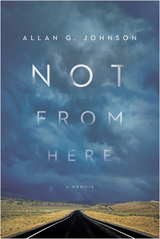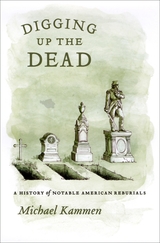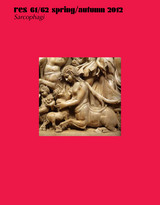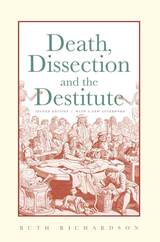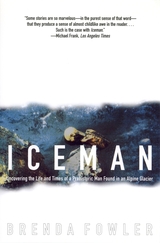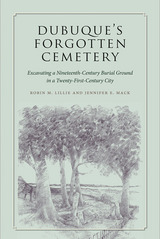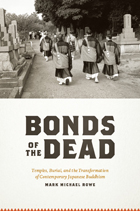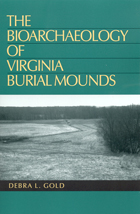Burial PracticesCollection by Cassandra Verhaegen (10 items)Bury your nose in a good book. Includes the following tags:
Aesthetics, Afterlife, Bioarchaeology, Buddhism, Catholics, Dead, Death & Dying, Egypt, Elsner, Jaś, Ethnicity, Funeral rites and ceremonies, Gold, Debra L., Great Plains, Human remains (Archaeology), Indians, Treatment of, Iowa, Juvenile literature, Memoir, Middle West, Mississippian culture, Mounds, Mummies, Neolithic period, Pellizzi, Francesco, Physical, Res, Rituals & Practice, Times, Uncovering, Virginia, Wu, Hung
See More
|
The Mound Builders
by Robert Silverberg
Ohio University Press, 1986
In Illinois, the one-hundred-foot Cahokia Mound spreads impressively across sixteen acres, and as many as ten thousand more mounds dot the Ohio River Valley alone. The Mound Builders traces the speculation surrounding these monuments and the scientific excavations which uncovered the history and culture of the ancient Americans who built them. The mounds were constructed for religious and secular purposes some time between 1000 B.C. and 1000 A.D., and they have prompted curiosity and speculation from very early times. European settlers found them evidence of some ancient and glorious people. Even as eminent an American as Thomas Jefferson joined the controversy, though his conclusions—that the mounds were actually cemeteries of ancient Indians—remained unpopular for nearly a century. Only in the late 19th century, as Smithsonian Institution investigators developed careful methodologies and reliable records, did the period of scientific investigation of the mounds and their builders begin. Silverberg follows these excavations and then recounts the story they revealed of the origins, development, and demise of the mound builder culture.
1
|
Death and the Afterlife in Ancient Egypt
by John H. Taylor
University of Chicago Press, 2001
Of all the ancient peoples, the Egyptians are perhaps best known for the fascinating ways in which they grappled with the mysteries of death and the afterlife. This beautifully illustrated book draws on the British Museum's world-famous collection of mummies and other funerary evidence to offer an accessible account of Egyptian beliefs in an afterlife and examine the ways in which Egyptian society responded materially to the challenges these beliefs imposed. The author describes in detail the numerous provisions made for the dead and the intricate rituals carried out on their behalf. He considers embalming, coffins and sarcophagi, shabti figures, magic and ritual, and amulets and papyri, as well as the mummification of sacred animals, which were buried by the millions in vast labyrinthine catacombs. The text also reflects recent developments in the interpretation of Egyptian burial practices, and incorporates the results of much new scientific research. Newly acquired information derives from a range of sophisticated applications, such as the use of noninvasive imaging techniques to look inside the wrappings of a mummy, and the chemical analysis of materials used in the embalming process. Authoritative, concise, and lucidly written, Death and the Afterlife in Ancient Egypt illuminates aspects of this complex, vibrant culture that still perplex us more than 3,000 years later.
2
|
Not from Here
by Allan Johnson
Temple University Press, 2015
When Allan Johnson asked his dying father where he wanted his ashes to be placed, his father replied—without hesitation—that it made no difference to him at all. In his poignant, powerful memoir, Not from Here, Johnson embarks on an extraordinary, 2,000-mile journey across the Upper Midwest and Northern Plains to find the place where his father’s ashes belonged. As a white man with Norwegian and English lineage, Johnson explores both America and the question of belonging to a place whose history holds the continuing legacy of the displacement, dispossession, and genocide of Native peoples. More than a personal narrative, Not from Here illuminates the national silence around unresolved questions of accountability, race, and identity politics, and the dilemma of how to take responsibility for “a past we did not create.” Johnson’s story—about the past living in the present; of redemption, fate, family, tribe, and nation; of love and grief—raises profound questions about belonging, identity, and place.
3
|
Digging Up the Dead
by Michael Kammen
University of Chicago Press, 2010
With Digging Up the Dead, Pulitzer Prize–winning historian Michael Kammen reveals a treasure trove of fascinating, surprising, and occasionally gruesome stories of exhumation and reburial throughout American history. Taking us to the contested grave sites of such figures as Sitting Bull, John Paul Jones, Frank Lloyd Wright, Daniel Boone, Jefferson Davis, and even Abraham Lincoln, Kammen explores how complicated interactions of regional pride, shifting reputations, and evolving burial practices led to public and often emotional battles over the final resting places of famous figures. Grave-robbing, skull-fondling, cases of mistaken identity, and the financial lures of cemetery tourism all come into play as Kammen delves deeply into this little-known—yet surprisingly persistent—aspect of American history. Simultaneously insightful and interesting, masterly and macabre, Digging Up the Dead reminds us that the stories of American history don’t always end when the key players pass on. Rather, the battle—over reputations, interpretations, and, last but far from least, possession of the remains themselves—is often just beginning.
4
|
Res
edited by Francesco Pellizzi
Harvard University Press, 2013
Res 61/62, Sarcophagi, is guest edited by Wu Hung and Jas Elsner. It includes “Chinese coffins from the first millennium b.c. and early images of the afterworld” by Alain Thote; “Art and personhood” by Björn Ewald; “Western Han sarcophagi and the transformation of Chinese funerary art” by Zheng Yan; “Reading identity on Roman strigillated sarcophagi” by Janet Huskinson; “‘A Tomb Both Great and Blameless’” by Richard Neer; “Funerary Spatiality” by Lillian Lan-ying Tseng; “‘Nero’s Tomb’ and the crisis of the third century” by Edmund Thomas; “Jouissance of death?” by Eugene Wang; “Reading images without texts on Roman sarcophagi” by Paul Zanker; “Decorative imperatives between concealment and display” by Jas Elsner; “Han sarcophagi” by Wu Hung; “Framing the dead on Roman sarcophagi” by Verity Platt; “Presentation, (re)animation, and the enchantments of technology” by Finbarr Barry Flood; “Death panels” by T. J. Clark; and contributions to Documents and Discussions by Andrew Scherer and Roberta Bonetti. Also included are contributions to Lectures—Color by Alexandre Tokovinine, Cameron L. McNeil, Timothy W. Pugh and Leslie G. Cecil, Leonardo Lopez Lujàn, Douglas K. Charles, and Warren R. DeBoer.
See More
5
|
Death, Dissection and the Destitute
by Ruth Richardson
University of Chicago Press, 2001
In the early nineteenth century, body snatching was rife because the only corpses available for medical study were those of hanged murderers. With the Anatomy Act of 1832, however, the bodies of those who died destitute in workhouses were appropriated for dissection. At a time when such a procedure was regarded with fear and revulsion, the Anatomy Act effectively rendered dissection a punishment for poverty. Providing both historical and contemporary insights, Death, Dissection, and the Destitute opens rich new prospects in history and history of science. The new afterword draws important parallels between social and medical history and contemporary concerns regarding organs for transplant and human tissue for research.
6
|
Iceman
by Brenda Fowler
University of Chicago Press, 2001
On September 19, 1991 a couple hiking along an Alpine ridge stumbled upon a frozen, intact corpse melting out of a glacier. He was dubbed "the Iceman," and his discovery—along with the realization that he was actually 5,000 years old—set off a whirlwind of political, scientific, and media activity that made him an overnight sensation. In this remarkable and dramatic book, Brenda Fowler takes readers through the bizarre odyssey that began in the Stone Age and continued for years after the Iceman was unearthed.
7
|
Dubuque's Forgotten Cemetery
by Robin M. Lillie and Jennifer E. Mack
University of Iowa Press, 2015
Atop a scenic bluff overlooking the Mississippi River and downtown Dubuque there once lay a graveyard dating to the 1830s, the earliest days of American settlement in Iowa. Though many local residents knew the property had once been a Catholic burial ground, they believed the graves had been moved to a new cemetery in the late nineteenth century in response to overcrowding and changing burial customs. But in 2007, when a developer broke ground for a new condominium complex here, the heavy machinery unearthed human bones. Clearly, some of Dubuque’s early settlers still rested there—in fact, more than anyone expected. For the next four years, staff with the Burials Program of the University of Iowa Office of the State Archaeologist excavated the site so that development could proceed. The excavation fieldwork was just the beginning. Once the digging was done each summer, skeletal biologist Robin M. Lillie and archaeologist Jennifer E. Mack still faced the enormous task of teasing out life histories from fragile bones, disintegrating artifacts, and the decaying wooden coffins the families had chosen for the deceased. Poring over scant documents and sifting through old newspapers, they pieced together the story of the cemetery and its residents, a story often surprising and poignant. Weaving together science, history, and local mythology, the tale of the Third Street Cemetery provides a fascinating glimpse into Dubuque’s early years, the hardships its settlers endured, and the difficulties they did not survive. While they worked, Lillie and Mack also grappled with the legal and ethical obligations of the living to the dead. These issues are increasingly urgent as more and more of America’s unmarked (and marked) cemeteries are removed in the name of progress. Fans of forensic crime shows and novels will find here a real-world example of what can be learned from the fragments left in time’s wake.
8
|
Bonds of the Dead
by Mark Michael Rowe
University of Chicago Press, 2011
Despite popular images of priests seeking enlightenment in snow-covered mountain temples, the central concern of Japanese Buddhism is death. For that reason, Japanese Buddhism’s social and economic base has long been in mortuary services—a base now threatened by public debate over the status, treatment, and location of the dead. Bonds of the Dead explores the crisis brought on by this debate and investigates what changing burial forms reveal about the ways temple Buddhism is perceived and propagated in contemporary Japan. Mark Rowe offers a crucial account of how religious, political, social, and economic forces in the twentieth century led to the emergence of new funerary practices in Japan and how, as a result, the care of the dead has become the most fundamental challenge to the continued existence of Japanese temple Buddhism. Far from marking the death of Buddhism in Japan, Rowe argues, funerary Buddhism reveals the tradition at its most vibrant. Combining ethnographic research with doctrinal considerations, this is a fascinating book for anyone interested in Japanese society and religion.
9
|
The Bioarchaeology of Virginia Burial Mounds
by Debra L. Gold
University of Alabama Press, 2004
A long-ignored prehistoric mound building people By the 14th century more than a dozen accretional burial mounds—reaching heights of 12 to 15 feet—marked the floodplains of interior Virginia. Today, none of these mounds built by the nearly forgotten Monacan Indians remain on the landscape, having been removed over the centuries by a variety of natural and cultural causes. This study uses what remains of the mounds—excavated from the 1890s to the 1980s— to gain a new understanding of the Monacans and to gauge their importance in the realm of the late prehistoric period in the Eastern Woodlands. Based on osteological examinations of dozens of complete skeletons and thousands of isolated bones and bone fragments, this work constructs information on Monacan demography, diet, health, and mortuary ritual in the 10th through the 15th centuries. The results show an overall pattern of stability and local autonomy among the Late Woodland village societies of interior Virginia in which a mixture of maize farming and the collection of wild food resources were successful for more than 600 years. This book—uniting biological and cultural aspects of the data for a holistic understanding of everyday life in the period—will be of interest to ethnohistorians, osteologists, bioarchaeologists, and anyone studying Late Woodland, Mississippian, and contact periods, as well as middle range societies, in the Eastern Woodlands.
10
|
| Click here to go to the beginning. | ||||||||||
